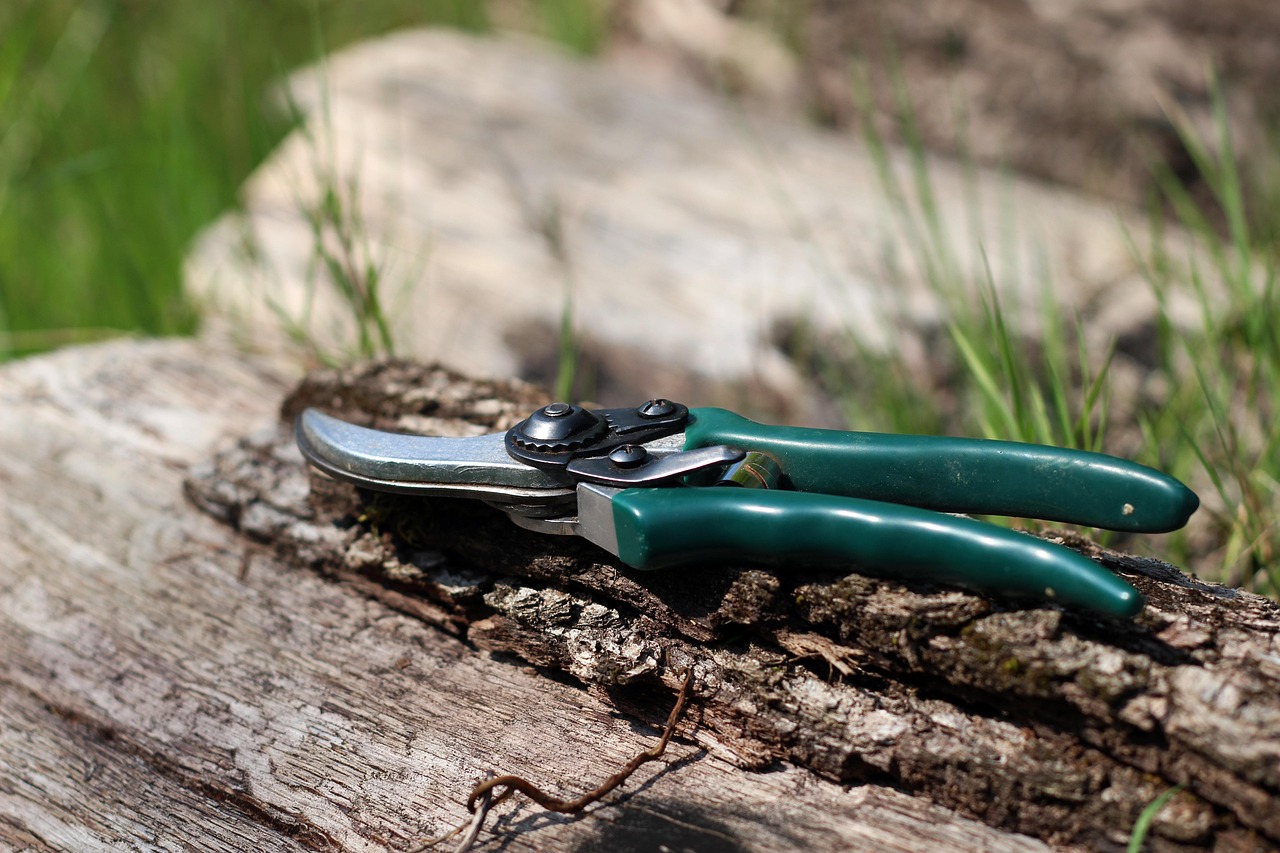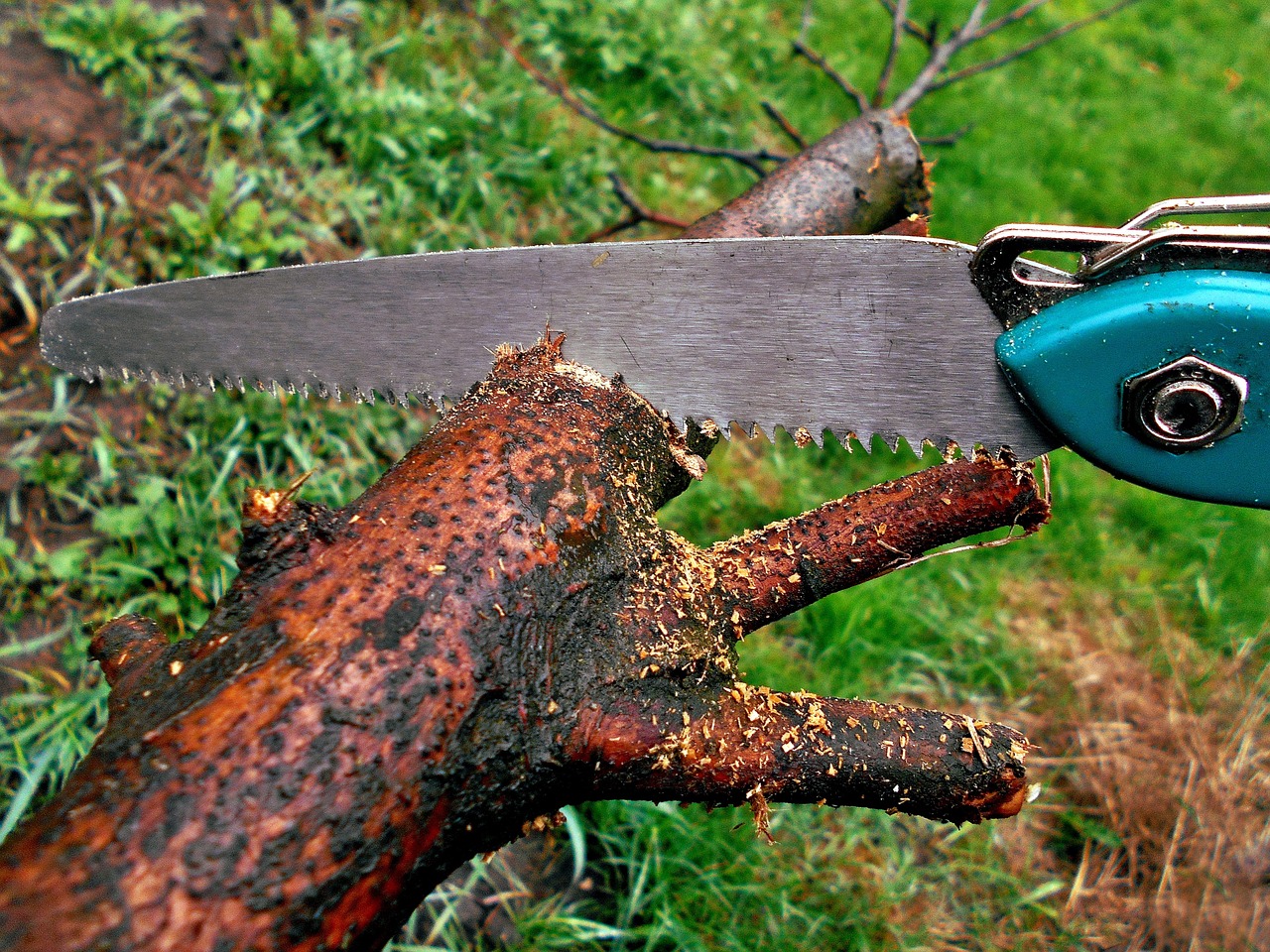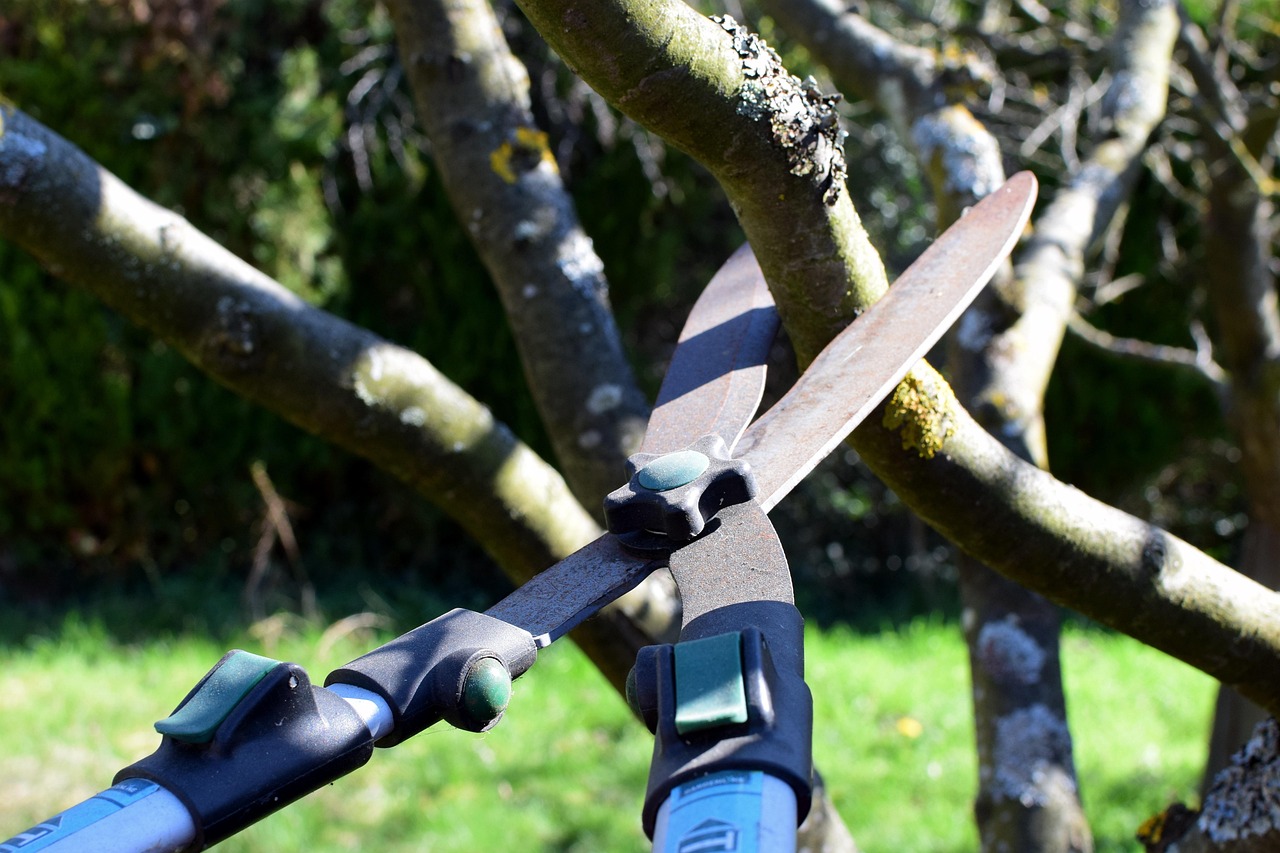Pruning flowering trees in early spring is essential for promoting healthy growth and vibrant blooms. Start by removing dead or damaged branches, followed by thinning out crowded areas. Always use clean, sharp tools to make precise cuts and avoid harming the tree.
Flowering trees bring beauty and color to any landscape. They not only enhance the aesthetic appeal of your garden but also provide habitat for various wildlife. Proper pruning techniques can significantly impact the health and longevity of these trees. Early spring is generally the best time to prune flowering trees, as it encourages robust growth and flowering for the coming season.

Understanding the right timing for pruning is vital. Different flowering trees have different blooming periods. Some trees bloom on old wood, while others bloom on new growth. This difference affects when you should prune. Pruning at the wrong time can lead to the loss of potential flowers.
Why Prune Flowering Trees?
Pruning is not just about aesthetics; it plays a crucial role in the overall health of flowering trees. Here are some reasons why pruning is essential:
- Encourages Healthy Growth: Pruning helps remove dead or diseased branches, allowing the tree to focus its energy on healthy growth.
- Improves Air Circulation: Thinning out crowded branches allows better air circulation, reducing the risk of fungal diseases.
- Shapes the Tree: Pruning helps maintain the desired shape and size of the tree, making it more visually appealing.
- Enhances Flower Production: Removing old wood can stimulate new growth, resulting in more abundant flowers.
When planning your pruning strategy, consider not only the health of the tree but also its structure and the surrounding environment. Properly pruned trees can enhance the overall look of your garden and improve safety by reducing the risk of falling branches.

Best Practices for Pruning Flowering Trees
To achieve the best results when pruning flowering trees, follow these best practices:
- Know Your Tree: Identify whether your tree blooms on old wood or new growth. This knowledge will dictate when you should prune it.
- Timing is Key: Prune trees that bloom in spring after they have finished flowering. For summer-blooming trees, early spring is ideal.
- Use Sharp Tools: Clean, sharp pruning shears or saws ensure clean cuts that heal faster.
- Aim for Structure: Focus on removing crossing branches and those that grow inward toward the center of the tree.
The following table provides information on common flowering trees and their ideal pruning times:
| Tree Type | Bloom Time | Pruning Time |
|---|---|---|
| Cherry Blossom | Spring | After flowering |
| Crabapple | Spring | After flowering |
| Magnolia | Spring | After flowering |
| Lilac | Spring | After flowering |
| Crape Myrtle | Summer | Early spring |
In addition to understanding your tree’s specific needs, it is also important to consider local climate conditions. Weather can influence when and how you should prune. Warmer climates may require different techniques compared to cooler areas.

Always monitor your tree for signs of stress or disease after pruning. New growth should be monitored closely to ensure it is robust and healthy. If you notice any issues, consult a local arborist for advice tailored to your specific tree type and local conditions.
By following these guidelines and understanding the specific requirements of your flowering trees, you will set the stage for a vibrant display of blooms in the springtime. Proper care and maintenance through pruning will lead to not only a lovely garden but also a healthier ecosystem for various forms of wildlife.
Essential Tools for Pruning Flowering Trees
Having the right tools is critical for effective pruning. Using proper equipment can make the task easier and ensure clean cuts, which promote healthy recovery for the tree. Here are some essential tools you should have:

- Pruning Shears: Ideal for small branches, these tools offer precision and control. Choose bypass shears for clean cuts.
- Loppers: For branches that are too thick for pruning shears, loppers provide extra leverage and reach.
- Pruning Saw: A small handsaw is perfect for cutting larger limbs. It is designed to cut wood efficiently.
- Hedge Shears: Use these for shaping and trimming smaller flowering trees or shrubs.
- Safety Gear: Always wear gloves and protective eyewear to ensure safety while pruning.
Regular maintenance of your tools is also vital. Keep them clean and sharpened to make effective cuts without damaging the tree. Dull tools can crush branches rather than make clean cuts, leading to potential disease entry points.
Pruning Techniques for Flowering Trees
Once you have the right tools, it’s time to focus on the techniques used for pruning flowering trees. Each tree species may require different techniques, but there are some general methods that can be applied:
Thinning Cuts
This technique involves removing selected branches to improve air circulation and light penetration within the tree’s canopy. Thinning helps maintain the natural shape of the tree while promoting healthy growth.
- Select branches that are crowded or crossing.
- Make your cut just outside the branch collar, which is the swollen area where a branch connects to the trunk.
- Aim to remove no more than 25% of the tree’s canopy in one season.
Heading Cuts
Heading cuts involve shortening a branch to promote bushier growth. This technique should be used strategically to ensure it does not lead to excessive growth in unwanted areas.
- Choose branches that extend too far beyond the desired shape.
- Make a clean cut above a bud or side branch facing outward from the tree.
- This encourages new growth to develop in a more appealing direction.
Reduction Cuts
Reduction cuts are used to decrease the height or size of a tree without altering its natural shape. This technique is especially useful for maintaining trees near structures or power lines.
- Select a branch that needs to be reduced in size.
- Cut back to a lateral branch that is at least one-third the diameter of the removed branch.
- This method helps maintain balance and overall health of the tree.
Common Mistakes to Avoid While Pruning
Even with the right knowledge and tools, mistakes can occur during pruning. Here are some common errors to avoid:
- Pruning at the Wrong Time: Ensure you know your tree’s blooming cycle. Pruning at the wrong time can lead to a loss of flowers.
- Over-Pruning: Removing too many branches can stress the tree. Aim to keep at least 75% of the canopy intact.
- Poor Cuts: Avoid making flush cuts against the trunk, as they can harm the tree. Always cut at a slight angle and leave a bit of the collar intact.
- Ineffective Tools: Using dull or improper tools can lead to jagged cuts, making it easier for diseases to enter.
By being mindful of these common mistakes, you can enhance your pruning skills and ensure the health of your flowering trees.
Understanding Tree Growth Patterns
Each type of flowering tree has unique growth patterns, which influence how and when you should prune. Understanding these patterns will help you make better decisions regarding your pruning strategy.
| Tree Type | Growth Pattern | Pruning Considerations |
|---|---|---|
| Dogwood | Mature trees have a layered structure | Focus on thinning out crowded branches |
| Apple Tree | Develops an open center with upward growth | Encourage lateral branching for fruit production |
| Cherry Tree | Bears flowers on older wood | Avoid heavy pruning; remove only dead or damaged wood |
| Pear Tree | Grows vigorously with dense foliage | Thinning is important for light and air penetration |
The more you understand your flowering trees’ growth habits, the better equipped you will be to make informed pruning decisions that will benefit their health and appearance over time.
This knowledge will not only improve your gardening skills but will also contribute to creating a thriving environment for your flowering trees, ensuring they flourish season after season.
Signs of a Healthy Tree Post-Pruning
After you have pruned your flowering trees, it is crucial to monitor their recovery. A healthy tree will exhibit certain signs indicating that it is responding well after pruning. Understanding these signs will help you ensure that your efforts are successful.
- New Growth: Look for the emergence of new buds and leaves. This indicates that the tree is putting energy into growth.
- Healthy Leaves: New leaves should be vibrant and green. Yellowing or wilting leaves may indicate stress.
- Strong Branches: The remaining branches should feel firm and stable. Any signs of bending or weakness may require attention.
- Flower Production: If the tree produces flowers in the next blooming season, it is a clear sign that pruning was beneficial.
Monitoring these signs will help you assess the effectiveness of your pruning techniques and make adjustments as needed in future seasons. If you notice any negative signs, such as excessive drooping or lack of new growth, it may be worth consulting with a professional arborist.
Common Pests and Diseases Affecting Flowering Trees
Flowering trees can be susceptible to various pests and diseases, which can hinder their growth and flowering potential. Being aware of these issues will help you take preventive measures and act quickly when problems arise.
Pests
- Aphids: These small insects feed on the sap of leaves and stems, leading to stunted growth and distorted leaves. Control methods include insecticidal soap or introducing beneficial insects like ladybugs.
- Spider Mites: These tiny pests thrive in dry conditions and can cause yellowing leaves. Regularly misting the foliage can help, along with insecticidal treatments if infestations occur.
- Caterpillars: Various caterpillar species can damage leaves. Hand-picking them off or applying Bacillus thuringiensis (Bt) can help control their population.
Diseases
- Powdery Mildew: This fungal disease appears as a white powdery substance on leaves, often due to high humidity. Improving air circulation and applying fungicides can help manage this issue.
- Canker: Cankers are dead areas on branches caused by fungal infections. Prune out affected areas immediately to prevent further spread.
- Root Rot: Overwatering can lead to root rot, where roots become mushy and dark. Ensuring proper drainage is key to preventing this condition.
Identifying and addressing these pests and diseases early can save your flowering trees from significant damage. Regular inspections are essential for maintaining tree health.
Seasonal Care for Flowering Trees
Pruning is just one aspect of caring for flowering trees. Seasonal care plays a vital role in promoting overall health and ensuring vibrant blooms each year. Here are some important seasonal tasks to consider:
Spring Care
- Fertilization: After pruning, apply a balanced fertilizer to support new growth. Choose a fertilizer formulated specifically for flowering trees.
- Mulching: Add a layer of mulch around the base of the tree to retain moisture and suppress weeds.
- Irrigation: Ensure adequate watering, especially during dry spells. Newly pruned trees may need extra hydration as they recover.
Summer Care
- Pest Monitoring: Keep an eye out for pests and diseases, especially during hot weather when issues may arise.
- Watering Schedule: Adjust watering based on rainfall and temperature changes. Early morning is the best time to water.
Fall Care
- Late Season Pruning: For some trees, minor touch-ups can be done in fall after flowering has ceased.
- Preparing for Winter: Apply a winter protectant or wrap sensitive young trees to shield them from harsh winter conditions.
winter Care
- Inspection: Check for any damage from snow or ice. Remove broken branches if necessary.
- Planning for Spring: Evaluate your pruning techniques from the previous season and plan any improvements for the upcoming spring.
Caring for flowering trees throughout the year helps them thrive and perform at their best. Paying attention to their needs in each season creates a strong foundation for healthy growth and stunning blooms.
The Role of Professional Arborists
If you find yourself uncertain about pruning techniques or tree health, hiring a professional arborist can be beneficial. They possess the knowledge and experience to assess tree conditions accurately and recommend appropriate actions.
- Expert Assessment: Arborists can provide insights into your tree’s specific needs based on species, age, and health conditions.
- Safe Pruning Techniques: Professionals use advanced techniques and equipment to ensure that pruning is done safely without harming the tree.
- Disease Management: Arborists can identify diseases early and suggest effective treatment plans to keep your flowering trees healthy.
Investing in professional care can lead to healthier trees and a more beautiful landscape overall. If you’re considering major pruning or have concerns about tree health, consulting an arborist may be the best path forward.
Advanced Pruning Techniques for Experienced Gardeners
For those who have gained experience in pruning flowering trees, there are advanced techniques that can further enhance the health and beauty of your trees. These methods require a deeper understanding of tree biology and growth patterns.
Espalier Pruning
Espalier is a technique used to train trees to grow flat against a wall or fence. This method not only saves space but also provides unique aesthetic appeal.
- Choose the Right Tree: Select a tree species suitable for espalier, such as apple or pear.
- Create a Framework: Use wires or trellises to establish a framework to which the tree will be trained.
- Regular Maintenance: Prune regularly to maintain the shape and encourage horizontal growth.
Crown Reduction
Crown reduction is an advanced technique used to reduce the height of a tree while maintaining its natural shape. This method is often applied to older trees that have become too tall or wide.
- Select branches that are excessively long or out of proportion with the rest of the tree.
- Reduce these branches back to a lateral branch that can support future growth.
- Avoid cutting too much at once, as this can shock the tree.
Pollarding
Pollarding involves cutting back the upper branches of a tree to promote new growth. This technique is often used on trees near roads or pathways to keep them at a manageable height.
- Timing: Pollard in late winter or early spring before new growth begins.
- Regular Cuts: Maintain the shape by performing this technique annually or biennially.
While these advanced techniques can be beneficial, they require skill and knowledge. It may be worth consulting with a professional arborist before attempting them to ensure proper execution and tree health.
Environmental Considerations for Pruning
When pruning flowering trees, it’s essential to consider environmental factors that can affect both the trees and their surroundings. Sustainable practices not only benefit your trees but also contribute positively to the ecosystem.
- Utilize Organic Methods: Whenever possible, use organic fertilizers and pest control methods to minimize chemical impact on the environment.
- Recycle Pruning Debris: Instead of discarding pruned branches and leaves, consider composting them or using them as mulch. This practice enriches the soil and supports tree health.
- Maintain Biodiversity: Encourage diverse plantings around your flowering trees to support local wildlife and create a balanced ecosystem.
Being mindful of these environmental considerations not only helps in maintaining healthy flowering trees but also promotes a sustainable garden environment that benefits all living organisms within it.
Final Thoughts
Pruning flowering trees in early spring is an essential task that fosters healthy growth and vibrant blooms. By understanding the specific needs of your trees, employing the right techniques, and utilizing appropriate tools, you can ensure that your flowering trees thrive year after year. Regular monitoring for signs of health, awareness of potential pests and diseases, and seasonal care all play significant roles in maintaining the vitality of your trees.
The knowledge gained from this guide empowers you to take proactive steps in caring for your flowering trees. Whether you choose to engage in simple pruning or explore advanced techniques, your efforts will contribute to a more beautiful landscape and healthier ecosystem. If uncertainties arise, do not hesitate to consult with professional arborists who can provide expert guidance tailored to your specific situation.
In summary, with patience, practice, and proper care, your flowering trees will reward you with stunning displays of blossoms each spring, enhancing your garden’s beauty and providing enjoyment for years to come.
